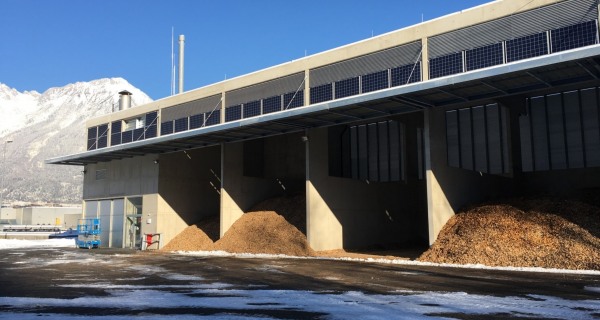Powerhouse Rossau
Name and address
Wastewater treatment plant Innsbruck
Josef-Mayer-Nusser Weg 30
6020 Innsbruck
Austria
Map
Source; Google Maps
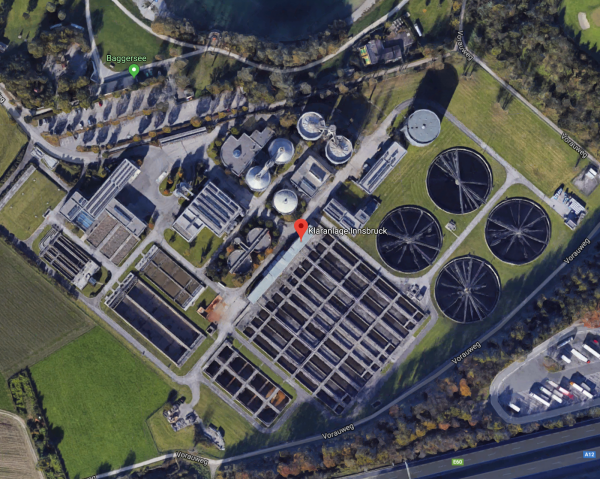
Type of installation
The RES-based energy potential at the site of Innsbruck wastewater treatment plant (WWTP) is used to generate heat, electricity, activated carbon and dried sewage sludge, which can be used as a substitute fuel. For this purpose, a smart combination of several components is necessary. The produced biogas, the accruing sludge of the WWTP, solid biomass wood chips and different types of waste heat are used as a primary energy source. The biogas is used in the CHP and in the hot water boiler of the sewage dryer, while the heat recovery is carried out by an air-to-water heat exchanger. The biomass gasification plant produces electricity, heat and activated carbon from wood chips. The energy derived from renewable sources is used for internal (WWTP) and external (public indoor swimming pool, restaurant at the public swimming lake, DH grid Innsbruck) consumers.
Ownership
Innsbrucker Kommunalbetriebe AG
Capacity
Biomass gasification plant
261 kWel / 393 kWth
Biogas CHP
1,702 kWel / 1,866 kWth
Biogas hot water boiler
1,800 kWth
Heat recovery – sewage sludge dryer
385 kWth
Façade integrated PV plant – biomass gasification plant
15,12 kWp
Conventional PV plant – biomass gasification plant
34,29 kWp
Conventional PV plant – public indoor swimming pool
18,72 kWp
Detailed characteristics of the device / infrastructure / service
The project “Powerhouse Rossau” includes the following major components:
- biogas-CHP,
- dryer for sewage sludge,
- biogas hot water boiler
- heat recovery - sewage sludge dryer
- biomass gasification plant,
- façade integrated photovoltaic plant
- conventional photovoltaic plant
- photovoltaic plant at public indoor swimming pool.
Concept
The figure below shows a simplified schematic representation of the project:
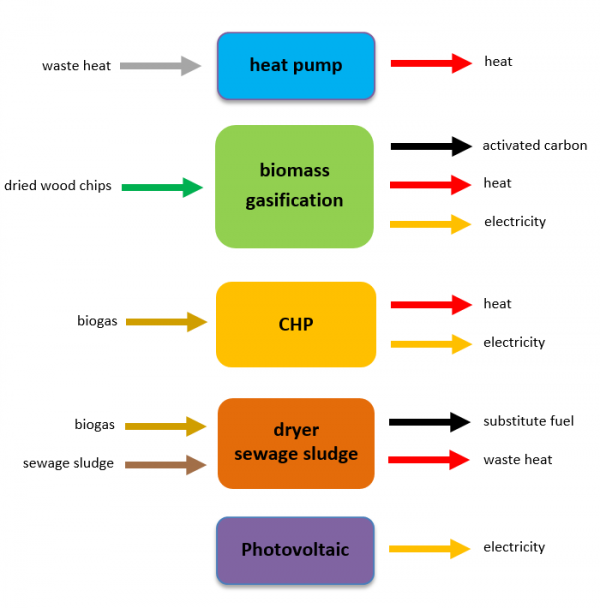
Technologies considered in the design
Biogas-CHP:
As part of Sinfonia, two new biogas CHP were installed at the wastewater treatment plant Innsbruck to convert biogas into electricity and heat. The plant has an electrical efficiency of 41 percent and a thermal efficiency of 45 percent, resulting in an overall efficiency of 86 percent. The electric power is 1,702 kW and the thermal power 1,866 kW.
Dryer for sewage sludge:
The implemented drying system reduces the sewage sludge mass by up to 75 percent, which in turn reduces the number of transport journeys and leads to considerable savings in CO2 emissions. The dryer is supplied by a biogas hot water boiler and the CHP's. Furthermore, the dryer is equipped with a highly efficient waste heat recovery system. The drying process produces around 4,000 tonnes of sludge granules per year with an energy potential of 13,000 MWh. The sludge granules can be used as a substitute fuel.
Biomass gasification plant:
In order to expand the supply of generating plants, an innovative demonstration plant for electricity and heat generation from renewable energies was realized. Local wood residues from forests and public parks are converted into wood gas, which is efficiently converted into electricity and heat in a combined heat and power plant. The heat is used as process heat for the wastewater treatment plant or transported to the nearby public indoor pool and the new restaurant on the public bathing lake. The by-product is activated carbon, which can be used in agriculture.
Conventional photovoltaic plant - public indoor swimming pool:
A photovoltaic system was built on the roof of the nearby public indoor swimming pool to cover a part of the own electricity consumption.
Façade integrated photovoltaic plant – biomass gasification plant:
A photovoltaic system was built on the building facade of the biomass gasification plant to cover a part of the own electricity consumption.
Conventional photovoltaic plant – biomass gasification plant:
A photovoltaic system was built on the roof of the of the biomass gasification plant to cover a part of the own electricity consumption.
Performance targets
- expected amount of produced heat: 21,662 MWh/a
- expected amount of produced electricity: 6,995 MWh/a
- expected amount of heat supply to DHG: 2,681 MWh/a
- expected amount of produced sludge granulate: 4.000 t/a
- expected amount of produced activated carbon: 1,348 t/a
- expected amount of reduced CO2: 11,440 t/a
Financing model
Direct investment of IKB 85%, national grant: 10 % and EC grant: 5%
Contracting authority
IKB Innsbrucker Kommunalbetriebe AG
Project manager
Sophia Neuner (IKB)
Manufacturer / supplier
Syncraft (biomass gasification plant)
Huber SE (sewage dryer)
GE Jenbacher (biogas engine)
Cost breakdown
The total investment costs are in order of 9.2 M€, Estimated payback time is: 10a
Implementation planning
1 - Design: 10/2014
Description of step: Planning and preparation of engineering
2 – Public procurement: 02/2016
Description of step: Procurement divided into 3 main parts
3 – Completion: 09/2017
Description of step: 3 phases of completion, test operation of 3 months
Work progress
Milestones
Figure 1: biomass gasification plant with façade integrated PV plant
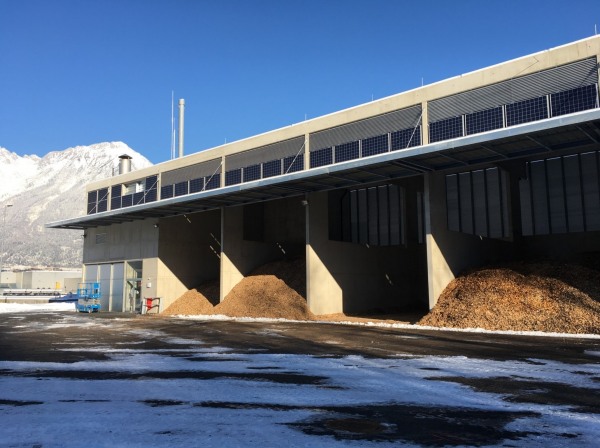
Figure 2: district heating pipes from WWTP to public indoor swimming pool
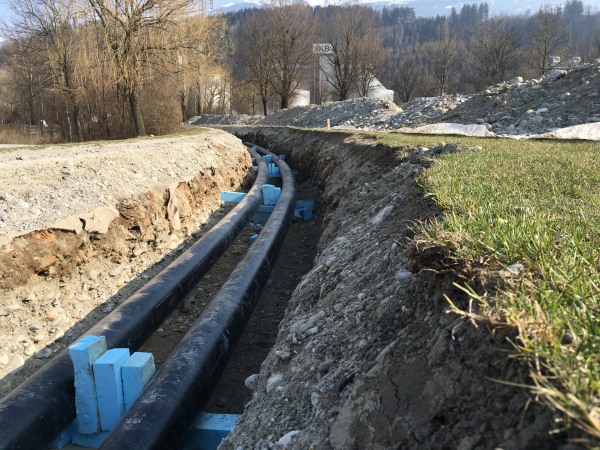
Figure 3: PV plant at public indoor swimming pool
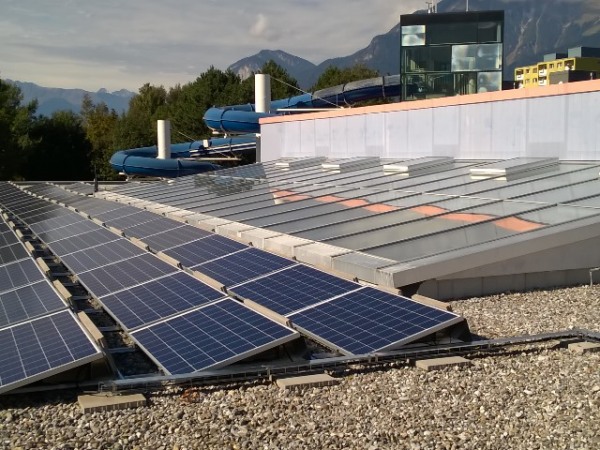
Figure 4: biogas CHP at the side of WWTP
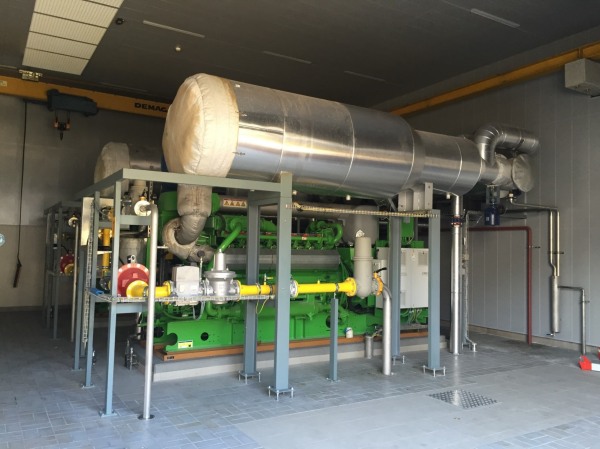
Figure 5: sewage sludge dryer at the side of WWTP

Monitoring System
The entire system has a modern process control system, which connects all components with each other. All measured values required for operation are recorded in the system. In order to assess the performance of the individual components, KPIs are calculated.
Monitored variables and figures
The following data is recorded for the Sinfonia project:
- energy input and output [kWhel, kWhth]
- production of biogas [m3/h]
- reduction of CO2 [t/a]
Estimated lifetime
Biomass gasification plant: 20 yrs
Biogas CHP: 20 yrs
Biogas hot water boiler: 20 yrs
Sewage sludge dryer:20 yrs
PV plants: 20 yrs
Buildings: 50 yrs
Pipe systems: 20 yrs

Building owner
IKB Innsbrucker Kommunalbetriebe AG
Manufacturer/Supplier
Syncraft (biomass gasification plant)
Huber SE (sewage dryer)
GE Jenbacher (biogas engine)
Contact
Sophia Neuner (IKB)
Project Manager
